Description
The Help” is a novel by Kathryn Stockett, published in 2009. Its story unfolded in the early 1960s in Jackson, Mississippi-the peak of the American Civil Rights Movement-around the complex relationships between white families and their Black maids. Through multiple first-person narratives, it develops the themes of racism, segregation, and courage to change the status quo. The book became bestseller and later film adaptation that won several Oscars in 2011.
Overview:
Plot Summary:
The story tracks the lives of three women whose lives are destined to converge. These women are united because of one writing project that needs to expose the atrocities faced by Black domestic workers in the South.
Eugenia “Skeeter” Phelan: Skeeter is an innocent young girl who had just graduated from college, and she has come back home. She was fresh off the farm in Meridian, Mississippi. While most of her classmates are set to go off into suitable marriages with white men, there is something about Skeeter that must write. She puts those stories down on paper so that her community can expose the problems she has been facing. Skeeter spent most of her childhood with her favorite maid, Constantine, who vanished under mysterious circumstances when Skeeter was away at school.
Aibileen Clark: Aibileen is a mature African-American maid. She has spent most of her life raising white children while grieving for her only son, whom she lost as a result of a cotton gin accident. She works for one of Skeeter’s friends, Elizabeth Leefolt, to whom she has become attached. She’s developed an affection for Leefolt’s daughter, Mae Mobley. When Aibileen begins as the first maid to agree to share her story with Skeeter, this brings an expose on her job and certain risks to her safety.
Minny Jackson: Minny is one sassy-mouthed maid who just can’t shut her mouth whenever she thinks she has been wronged. She cannot keep her jobs because she lets everyone around know about the mistreatment she has faced. Finally, Minny works for Hilly Holbrook, a racist and manipulative socialite with so many questionable motives who can be regarded as one of the adversaries in the story. She then starts working for Celia Foote, a sweet, courteous person but somebody so alienated to their world that even the elementary rules of Jackson society aren’t recognizable. Minny’s relationship is one of the key emotional arcs of the novel.
With Skeeter continuing to interview more maids and putting their stories together as a book, titled “Help,” the work becomes dangerous. Jackson is a seriously segregated society, and printing the book will bring to light every racist abuse carried out daily on the maids. However, Skeeter, Aibileen, and Minny continue working despite all dangers and somehow form an odd friendship across racial lines.
2. Themes:
Racism and Segregation: Racism ran very deep in the South of the 1960s. Black maids were forced to take care of white families, children, and whatever their whims might be, all the while serving under ‘more strict than any military barrack’ rules. The requirement to use separate toilets was just one of the more humiliating. At the same time, the maid received little respect or rights. It is through the voices of Aibileen and Minny that the novel uncovers the daily indignities and emotional weight that come with working for white families.
Exhibits strength and resilience: The danger that surrounds, the maids who narrate their stories to Skeeter show astonishing acts of bravery by speaking out against the status quo. In choosing to break their silence on their experiences, it demonstrates that collective efforts in cases of oppression have a greater power in bringing about change. Skeeter’s journey into realizing her position in society, freeing herself from societal expectations for white Southern women and using her privilege for good is something of great interest.
Race is but the most dominant aspect with the novel; in addition, there is a limited role set for women in the 1960s. Skeeter, Aibileen, and Minny all suffer oppression from different angles based on their gender. Skeeter’s desire to become independent and succeed professionally is seen as being disapproved of by her family and society, while maids are seen to sacrifice their needs to the service of the white families. The narratives of women detail how they accommodate these limitations.
Friendship and Solidarity: The novel’s most important relationship, by far, is the one developed between Skeeter, Aibileen, and Minny-Skeeter, an unlikely friendship. They bond over a singular effort for justice. Racial and class backgrounds could not splinter this strong bonding effort. end
Skeeter Phelan: Skeeter starts as a young woman who appears oblivious to deep racial injustices in society but becomes increasingly awakened. She changes from her comfortable background; she learns how to look at the world from the perspectives of the oppressed. She wants to write their stories- an action of defiance against the racist structures she was brought up with.
Aibileen Clark: Aibileen Clark is a Black maid who has suffered losses, hardships, and pain, yet her quiet power and wisdom stand deep within the novel. Her journey toward finding her own voice, taking part in Skeeter’s project, is a sign of silent resistance. The affection she carries for the little children she feeds, particularly Mae Mobley, happens to be a reminder of her humanity despite the racism she faces.
Minny Jackson: The charmain character in the novel, Minny is bold and witty, showing some comic relief along with other emotional depth to the story. Her ugly struggle with domestic abuse and her budding friendship with Celia Foote make her complex as a character. Sharing her story at risk shows the bravado of Minny in telling her story and wanting dignity and justice.
Hilly Holbrook: Hilly is the crystallization of deep-seated racism in the white Southern community. Using her power, she enforces segregation and punishes everyone who proves herself against this earthly portion of her existence. Thus, she forms a defining contrast with the more liberal and progressive persons of the play, thus halting change.
4. Historical Context:
It was the Civil Rights Movement, quite certainly an important period in American history, when activists fought to end segregation and gain equal rights for Black Americans; figures like Martin Luther King Jr. and all the marches, protests, and violent resistance to desegregation were part of the background, and the novel reflects the tensions of the times. By relating the maids’ stories, the narrator commits to danger, for talking about power and its relation to race is dangerous, especially talking against an established order in the Deep South.
5. Controversy and Criticism :
While “The Help” received a great deal of recognition for the storytelling and the attention given to important historical issues, many readers and scholars who believed this held it against the book for perpetuating a “white savior” narrative, in which Skeeter is the one to give the maids’ voices to the world. Some criticism of the book was made because some of the Black characters were not able to exercise agency or control over their lives.
Others have criticized the book, and many are debating over the book because Stockett would be the author of this piece as a white woman.
6. Symbolism:
The Book (“Help”): The writing project that Skeeter, Aibileen, and Minny are working on grows into a symbol of resistance to give voice to those without voices and to try to upset the structures of power that would silence them. It’s the power of storytelling for social change.
The Bathrooms: The separate bathrooms, particularly Hilly’s insistence that her maid use an outhouse outside, embody some of the extreme measures undertaken to ensure continued racial separation. The toilet becomes a focal point in the novel’s concerns about dehumanizing and racist behaviors.
Conclusion:
“The Help” is a compelling novel exploring intricate racial and social conditions of 1960s American South deeper. Through the interlocking stories of Skeeter, Aibileen, and Minny, Kathryn Stockett explores racism, courage, friendship, and the fight for equality. The novel spurred some much-needed conversation, garnering praise, but it definitely opened itself up to some criticism in how it handled its race relations. However, “The Help” is an important work to be seen for its portrayal of the personal stories behind a crucial period in America.

 جو رکے تو کوہ گرا 1 × ₨ 1,200
جو رکے تو کوہ گرا 1 × ₨ 1,200 The Great Gatsby 1 × ₨ 320
The Great Gatsby 1 × ₨ 320 Ugly Love by Colleen Hoover 1 × ₨ 350
Ugly Love by Colleen Hoover 1 × ₨ 350 Bakht 1 × ₨ 1,400
Bakht 1 × ₨ 1,400 Bookish People by Lindsay Richard 1 × ₨ 1,000
Bookish People by Lindsay Richard 1 × ₨ 1,000 Regretting Book 1 × ₨ 400
Regretting Book 1 × ₨ 400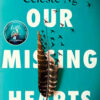 Our Missing Hearts 1 × ₨ 1,200
Our Missing Hearts 1 × ₨ 1,200 Beli Rajputan Ki Malika 1 × ₨ 1,000
Beli Rajputan Ki Malika 1 × ₨ 1,000 Bloody Heart by K. L. Kranes 1 × ₨ 1,000
Bloody Heart by K. L. Kranes 1 × ₨ 1,000 You Are the Placebo 1 × ₨ 750
You Are the Placebo 1 × ₨ 750 Anghan 1 × ₨ 1,300
Anghan 1 × ₨ 1,300 Reclaim Your Heart 1 × ₨ 320
Reclaim Your Heart 1 × ₨ 320 Cofness 1 × ₨ 300
Cofness 1 × ₨ 300 After 5 series 1 × ₨ 5,500
After 5 series 1 × ₨ 5,500 Eleven Minute 1 × ₨ 300
Eleven Minute 1 × ₨ 300 عشق آتش 1 × ₨ 2,400
عشق آتش 1 × ₨ 2,400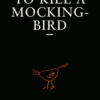 To Kill a Mockingbird 1 × ₨ 320
To Kill a Mockingbird 1 × ₨ 320
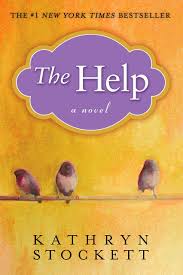
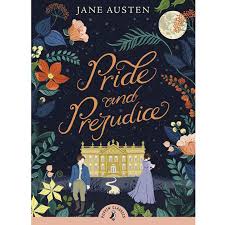

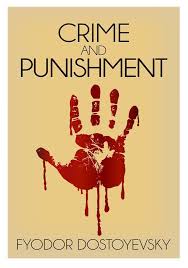




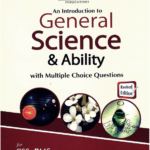
Reviews
There are no reviews yet.